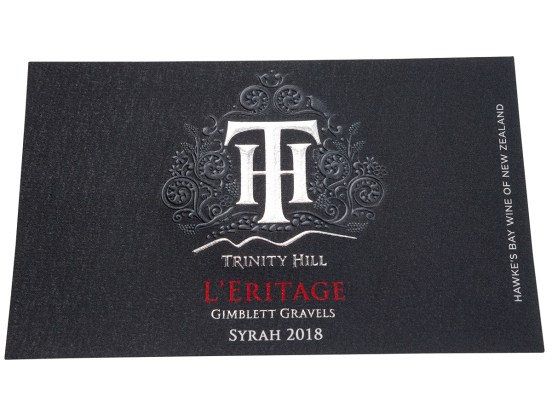Sotol, the small but growing agave-adjacent spirit, has the potential to capitalise on the runaway success of tequila, according to new data from global liquor analysts, IWSR.
“Made from the Dasylirion plant – aka ‘desert spoon’ – growing wild in Mexico and the southern US, sotol’s main attributes include a distinctive flavour profile, use in a wide range of cocktails, and a more sustainable method of production than tequila,” says Jose Luis Hermoso, Research Director, IWSR.
According to IWSR, a number of new sotol brands have recently launched in the US and Mexico, including Nocheluna – a joint venture between Pernod Ricard, Casa Lumbre and musician and actor Lenny Kravitz.
IWSR research shows the trajectory of agave-based spirits continued in 2022 with +13% volume growth, on top of a 2017-22 volume CAGR of +9%.
Tequila dominates the category but its success has lifted the fortunes of agave-adjacent spirits too: sotol volumes grew by +17% in 2022, and IWSR forecasts CAGR growth of +6% for the category between 2022 and 2027, albeit off a smaller base.
What is sotol?
Sotol is a distilled spirit made from the Dasylirion plant, a robust member of the asparagus family with species growing in Mexico and the southern US (Texas, New Mexico and Arizona).
Production is similar to tequila: the leaves of the plant are trimmed, and the heart is cooked, mashed, fermented and distilled to create the final product. Sometimes sotol is aged in oak.
Sotol has a distinctive flavour profile. “Artisanal sotol is much more aromatic than tequila, but not as smoky and intense as mezcal,” says Luigi Ambrosi, MD USA of Mexico-based Cardenxe Sotol.
“I always say that, for me, sotol sits in the middle between mezcal and gin, possessing a slightly smoky and earthy profile that reminds you of mezcal, but with very particular vegetal and floral notes typical of a gin.”
How do you drink sotol?
Sotol is often consumed in classic agave serves, but producers believe its distinctive taste makes it more flexible than tequila or mezcal.
Brent Looby, co-founder and CEO of Texas sotol producer Desert Door, says: “People often conflate tequila/mezcal with sotol. While it’s true that many of the same cocktails (Margaritas, Palomas, Ranch Waters) can be made with these spirits … sotol can also replace vodka or gin in many cocktails – in that respect it’s a bit more versatile.”
Ambrosi agrees. “While sotol may taste good in a Margarita and a Paloma, I actually think the ways in which one can best experience it is in gin-based cocktails such as Negroni, Martini, The Last Word, Gimlet twists, or generally in cocktails with herbal liqueurs such as Chartreuse, Aperol and elderflower.”
Hermoso adds that sotol-based cream liqueurs are also proving popular in some on-trade venues in the US and Mexico that want to differentiate themselves by offering more adventurous drinks. “While still a relatively small segment in volume terms, these extensions are expanding consumer awareness and creating buzz around the sotol category as a whole,” he says.
For example, Hacienda de Chihuahua, a large sotol producer in Mexico, has launched two sotol-based cream liqueurs: Hacienda de Chihuahua’s Sotol Chocolate Cream Liqueur and its Sotol Nut Cream Liqueur.
Sotol and agave: a helpful connection?
Despite the differences between the two products, sotol is closely associated with agave spirits. This has potential pros and cons.
“Tequila drinkers are an important demographic for Desert Door,” says Looby. “The growth of agave spirits has been great for agave-adjacent spirits like Desert Door. People who are fans of tequila or mezcal are often more willing to explore beyond the confines of just agaves.”
For Ambrosi, however, this is a double-edged sword. “The tequila and mezcal boom can be helpful for sotol in terms of consumers seeking Mexican products, and not being intimidated by them,” he says.
“At the same time, if sotol is to establish itself as a category of its own, without being constantly compared to or confused with tequila and mezcal, I think it’s important for it to stand out in different contexts and types of cocktail.”
Sotol’s potential
“A large share of sotol produced in Mexico is exported – over 60% is consumed in the US. There are much smaller shipments to markets such as the UK and Spain, but for most of the world, sotol remains largely unknown, so the opportunity for category expansion is huge,” says IWSR’s Hermoso.
Unlike tequila and mezcal, sotol does not have a specific Appellation of Origin (AOC). This means that producers outside of Mexico can designate their liquid as ‘sotol’. Tequila and mezcal, however, both have an AOC, so producers outside of Mexico must label their products as ‘agave-spirits’.
“In this regard, sotol produced outside of Mexico can capitalise on the familiarity and awareness of the segment,” says Hermoso.
Pernod Ricard’s participation in the category via the Nocheluna partnership is likely to raise sotol’s profile further. Nocheluna is initially being launched in Mexico and parts of Europe, before being rolled out to the rest of Europe and Asia.
Both Abrosi and Looby are bullish about sotol’s future. “There’s a real appetite in the world for plant-based, additive-free products such as sotol,” says Ambrosi. “Moreover, its flavour profile can appeal to gin, whisky, tequila and mezcal drinkers alike.”
Desert Door currently sells its two core sotol expressions (plus an annual Conservation Series release) in 14 US states and would like to export, but has no firm plans to do so.
Cardenxe has two sotols sourced from Chihuahua, with a third (from Durango) due to launch in autumn 2024. The company sells in Mexico and the US, with plans to export to Costa Rica and Europe from next year.
While sotol’s growth trajectory is positive, it is important to note that volumes of sotol remain tiny in comparison with the relatively larger tequila and mezcal categories – and, according to IWSR growth projections, this is unlikely to change in the foreseeable future.
For more from IWSR, click here.
How to catch up with The Shout NZ…
Online, updated daily with its own unique content and breaking news.
Our weekly newsletter – free to your inbox! Subscribe here.
We are also on Facebook and Instagram!




